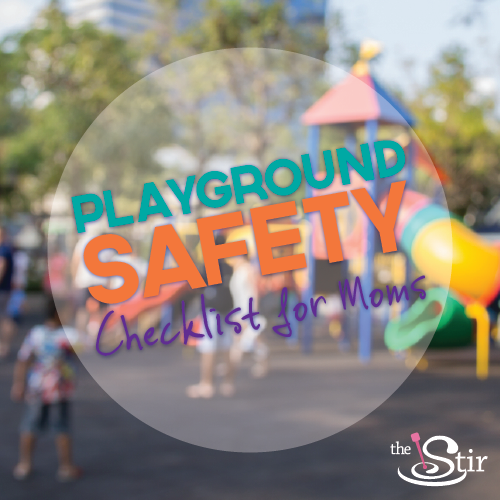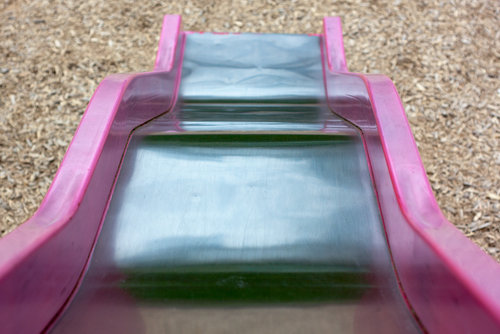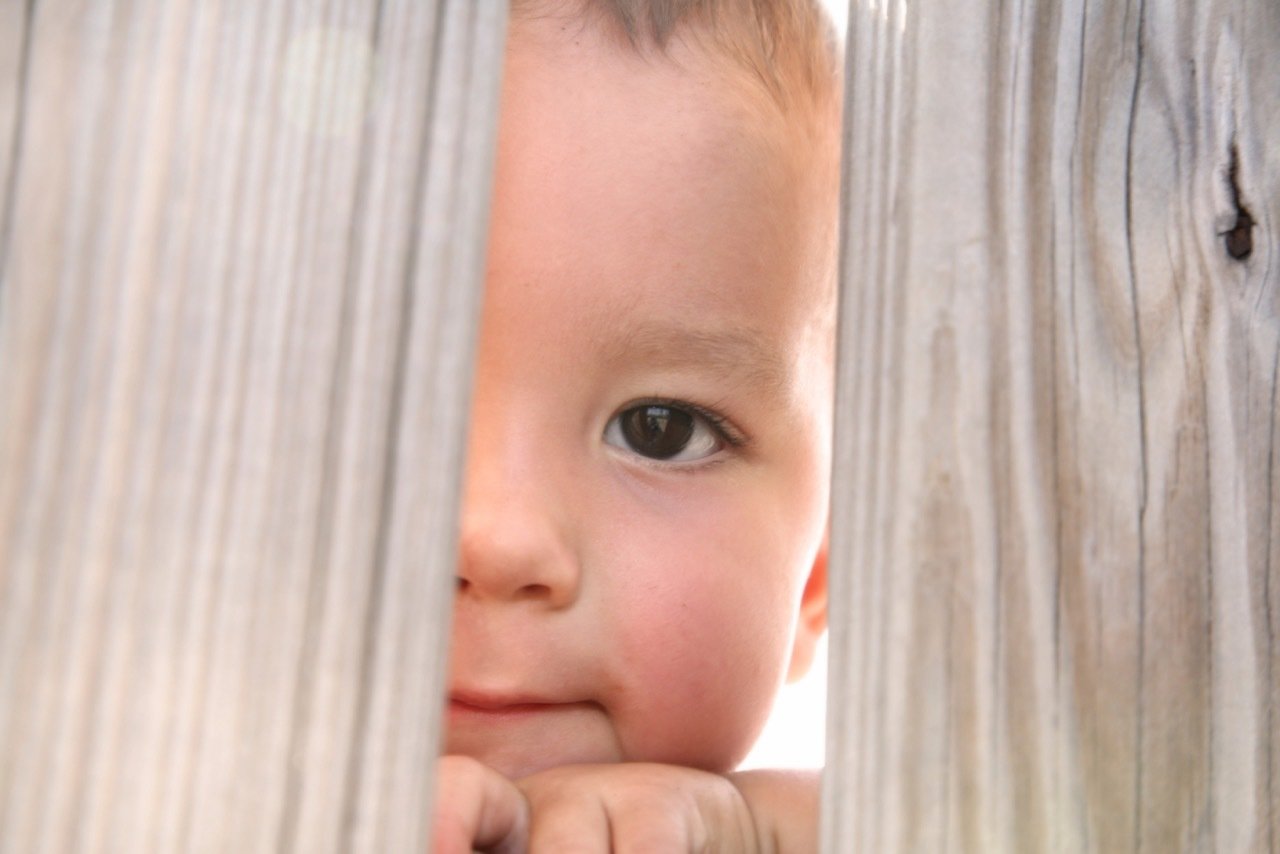Playground trips with the kiddos are part and parcel of parenting … but as the saying goes, they're all fun and games until someone gets hurt. Each year, about 200,000 children end up with playground injuries serious enough to land them in the emergency room. And the hazards aren't always as obvious as moms might think.
Even more troubling: just 16 states have passed laws mandating that playground equipment must adhere to safety standards set by the Consumer Product Safety Commission or the American Society for Testing and Materials. That still means that the majority of playgrounds in the country aren't held to these high standards. That means it's up to parents to stay on alert for potential trouble.
To help keep your kids safe on the playground this summer, keep an eye out for these surprising dangers. From burns on slides to broken legs, you don't want a fun family outing turning into an ambulance trip to the local hospital.

We never would have worried about #2, would you?
Image © iStock.com/nicolesy; shutterstock
Too Hot to Handle

You've probably heard to be wary of metal slides — or maybe you learned the hard way when your kid plunked down on one and burning the backs of his legs! But it turns out the metal slides aren't the only ones to be wary of: One-third of playground burns actually occur on equipment made of plastic, rubber, or other nonmetal substance. Plus, according to the CPSC, it doesn't even need to be hot out to cause trouble; one child reportedly received second-degree burns on a day when the outdoor temperature was only 72 degrees.
Bottom line: Don't assume any surface at a playground is safe without touching it in various places first, says Heather Olsen, associate professor at University of Northern Iowa and director of the National Program for Playground Safety. Since some objects take a while to transfer heat, keep your hand planted there for a few seconds, and move it around to various areas to check before your kids play.
S-hooks on Swings

Those metal S-hooks that link a swing to its chains can be accidents waiting to happen. Clothes can get caught in the tiny space where the S-hook closes its loop, and cause a child to get caught on a swing when he's trying to get off — ripping clothes or worse, warns Olsen. Try sliding a credit card inside the opening, and if it fits, it's too wide and should be avoided.
Sliding Down With Your Tot

If your toddler's a wee bit young to head down the slide himself, you may think it's safer to get up there yourself and slide down with your toddler in your lap. On the contrary, reasearchers have found that 14 percent of pediatric leg fractures occur due to this habit.
The kids' rubber soles catch on the slide, but then the weight and momentum of the adult keeps going, resulting in broken bones. If they're not ready to go down the slide alone, find another place to play.
Uncovered Screws

While you're nervously eyeing those towering monkey bars, the biggest threats to your child may be much, much smaller — like those tiny screws that keep the equipment together. "Some playground equipment has exposed screws, which could cut or scrape a child who comes in contact with them," warns Jason Turchin, a personal injury attorney who has represented playground injury victims.
Even worse: Your child's clothing can catch on these protrusions, increasing the odds of strangulation or other accidents, warns Olsen. What to do: Keep an eye out for exposed screws (usually near the joints on equipment), and make sure your kids' clothes aren't too loose or have drawstrings which can catch on these areas.
Heights Above Eight Feet

"Several studies show that 8 foot and higher structures result in three times as many injuries as lower equipment," says Olsen. And if your child is still a toddler, you should shoot for even smaller play places: Preschoolers are safest on equipment no taller than 6 feet.
More from The Stir: 12 Pieces of Playground Equipment No Kid Should Be Playing On
Rust

Sure, a playground may have seemed fine last year, but time can take its toll when metal surfaces aren't properly coated or maintained. The result? Rust, which can weaken equipment and put kids at risk — and stains on their clothes are the least of your worries.
"Rust corrodes metal, so if a child is swinging on a swing with rusty chains or climbing a rusty jungle gym, these areas could break," points out Olsen. "This could result in potentially life-threatening falls." So if you see rust in delicate areas like chains or small joints, move on to another piece of equipment.
Hard Surfaces Under Equipment

Whatever your kids are climbing, the surface beneath these structures is as critical as the equipment itself: Studies show that 67 percent of playground injuries are caused by falls from equipment to the ground. "If your child is playing on equipment elevated off the ground like swings, slides or monkey bars, you should watch out for asphalt, dirt, concrete, or grass beneath — none of which is acceptable," says Olsen. Surfaces that are considered safe bets: rubber, sand, pea gravel or wood chips (pictured at left).
How much of a difference can the surface make? Consider this: Studies show that the injury rate for asphalt is six times that of sand; the injury rate for concrete five times that of rubber. What's more, even if the surface has great shock absorption, look to see how much area it covers beyond the slides and monkey bars. In another study, 28 percent of the playgrounds surveyed did not have an adequate "fall zone" under climbing equipment. Because kids don't always fall straight down, there should be at least 6 feet's worth in every direction.
More from The Stir: 10 Things Never to Do at the Playground
Tight Spaces

Spaces between, say, guardrails or fence posts can spell trouble if they're between 3 1/2 and 9 inches wide. Why? Because curious kids can poke their heads through but can't easily get out!
In fact, one study by the United States Public Interest Research Group (PIRG) found that 34 percent of the playground equipment had improperly-sized openings that could lead to strangulation. So keep an eye out for any suspicious gaps — it could save your little one's life.
Swings Too Close Together

"Swings are disappearing from many playgrounds," says Olsen. And this might explain why: In the study by PIRG, 49 percent of playgrounds had swings that violated CPSC safety guidelines. Often there was inadequate spacing between swings and supports. Why does that matter? Swings spaced less than 2 feet from each other or supports can actually collide in motion.
So make sure they're farther apart to avoid these accidents waiting to happen. For swingsets at home, the CPSC recommendations are that the swings be at least 8 inches from the support frame and each other.
Bigger Kids With Smaller Ones

If there are big kids running around the playground with younger tykes, that could result in all kinds of trouble. "I've seen situations where older kids may push a younger kid down a slide, or run quickly through the playground area and bump into the smaller children and cause them to fall," says Turchin.
That's why the CPSC recommends that there should be separate areas and playground equipment for kids ages 2-5 and 5-12. If you see older kids on the the young kids' equipment, try steering them elsewhere. "There's usually signage on the equipment so you know which age is appropriate," says Olsen.
More from The Stir: 9 Rules Moms Should Follow at the Playground




